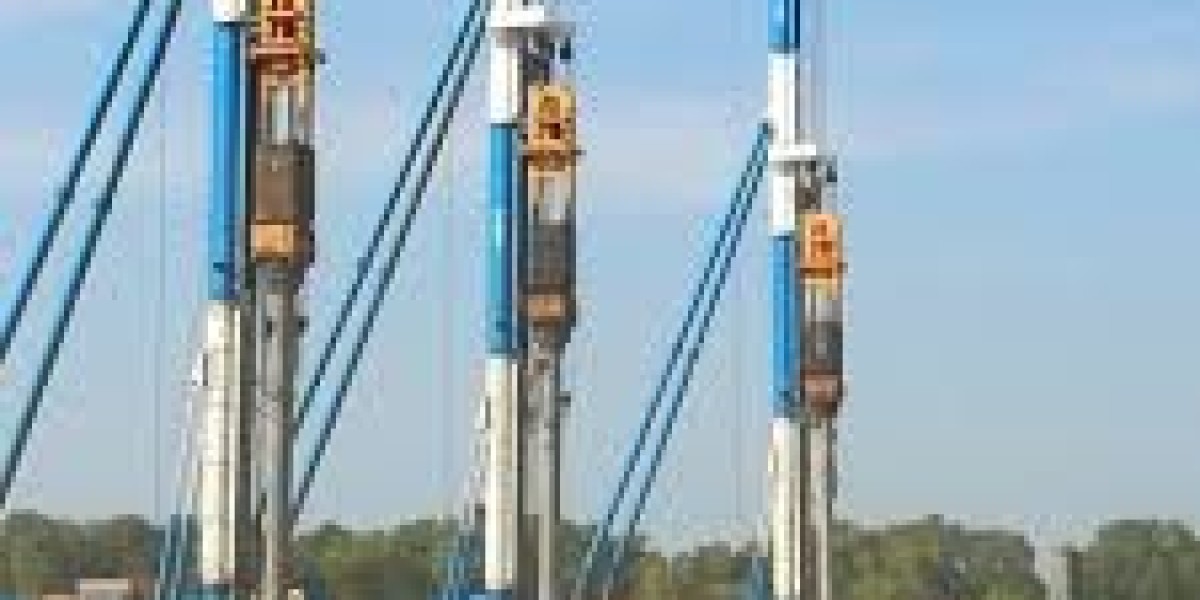As infrastructure demands grow in both scale and complexity, the foundation construction sector is evolving rapidly. Among the most critical innovations reshaping the way we build is the hydraulic pile driving hammer. A tool once seen as a specialty item has become essential in modern deep foundation work due to its power, control, and efficiency. As we look to the future, hydraulic pile driving hammers are poised to play a central role in meeting construction challenges related to speed, sustainability, and precision.
This article explores how the hydraulic pile driving hammer is transforming deep foundation practices and what advancements are shaping its future in 2025 and beyond.
What Is a Hydraulic Pile Driving Hammer?
A hydraulic pile driving hammer is a construction tool used to drive piles (steel, concrete, or timber) into the ground to support buildings, bridges, offshore platforms, and other heavy structures. Unlike diesel or drop hammers, which rely on combustion or gravity, hydraulic hammers use fluid power to generate force. This allows for consistent, controllable, and high-impact energy delivery, which is crucial for driving piles efficiently into a variety of soil conditions.
The hammer typically consists of a hydraulic power pack, a cylinder and piston system, a hammer ram, and a set of controls to adjust stroke height and impact energy.
Why Hydraulic Hammers Are Becoming the Industry Standard
1. Precision and Control
One of the main reasons for the rising popularity of the hydraulic pile driving hammer is the high level of control it provides. Operators can precisely adjust stroke height and impact energy, which allows for better control over penetration rates, minimizes pile damage, and ensures optimal pile installation.
2. Environmentally Friendly Operation
In a world moving toward greener practices, hydraulic hammers produce significantly less noise and air pollution compared to diesel hammers. With growing environmental regulations and community opposition to noisy construction, hydraulic systems are becoming the preferred choice in urban and sensitive environments.
3. Superior Efficiency
Hydraulic pile driving hammers are generally more energy-efficient than their diesel counterparts. They offer faster cycle times, reduced fuel consumption, and minimal maintenance requirements due to fewer moving parts. This efficiency translates into cost savings and faster project completion times.
4. Versatility Across Project Types
From bridge abutments and highway foundations to marine docks and wind turbine bases, the adaptability of hydraulic hammers makes them suitable for nearly every kind of deep foundation work. Whether mounted on cranes or integrated into modern rigs, these hammers are compatible with a wide range of pile types and sizes.
Innovations Shaping the Future of Hydraulic Pile Driving Hammers
The future of hydraulic pile driving technology is being driven by a combination of digital integration, sustainability demands, and enhanced performance capabilities.
1. Smart Monitoring and Automation
Modern hydraulic hammers are increasingly equipped with smart sensors and monitoring systems. These tools collect data in real-time on impact force, penetration rate, and alignment, which helps improve driving accuracy and reduce errors. Paired with GPS and machine-learning algorithms, some systems are now capable of semi-automated or fully automated pile driving routines.
This data-driven approach enhances productivity and provides engineers with detailed records for compliance and quality assurance.
2. Remote Operation and Safety Systems
With construction safety being a top priority, manufacturers are introducing remote control options and advanced safety interlocks for hydraulic hammers. These systems allow operators to control the hammer from a safe distance, reducing exposure to falling objects, high noise levels, and vibrations.
Emergency shut-off systems, automated diagnostics, and warning indicators further reduce the risk of accidents on the jobsite.
3. Modular and Lightweight Designs
Hydraulic pile driving hammers are being designed with modular components to ease transportation and simplify repairs. Some models are now significantly lighter without sacrificing performance, making them easier to deploy in remote or constrained environments, such as mountain passes or offshore platforms.
Lighter tools also allow for use with smaller cranes or excavators, expanding the accessibility of deep foundation work.
4. Integration with BIM and Construction Management Platforms
As Building Information Modeling (BIM) becomes a norm in construction planning, pile driving hammers are being developed to integrate with digital project management systems. Real-time feedback from the hammer can update digital models, helping project managers track progress and adjust schedules dynamically.
The Impact on Global Infrastructure
As governments around the world commit to infrastructure upgrades—especially in energy, transportation, and climate resilience—the need for reliable, efficient deep foundation systems is skyrocketing. From high-speed rail lines to offshore wind farms, the hydraulic pile driving hammer is at the heart of these developments.
Its ability to deliver powerful, precise, and sustainable pile installation makes it invaluable in projects that demand both speed and environmental compliance.
Considerations for Contractors
If you’re a contractor evaluating whether to invest in or rent a hydraulic pile driving hammer, consider the following:
Project Scope: Larger, high-volume projects often benefit most from the speed and reliability of hydraulic systems.
Environmental Requirements: Urban and sensitive ecological zones may require low-emission, low-noise equipment.
Equipment Compatibility: Ensure your cranes or rigs can support the hammer’s weight and hydraulic demands.
Training and Support: Opt for manufacturers that offer operator training, after-sales support, and diagnostic assistance.
Conclusion
The hydraulic pile driving hammer is more than just another tool—it's a cornerstone of the future of deep foundation work. With its blend of power, precision, and adaptability, it addresses many of the challenges faced by today’s infrastructure projects. As technology continues to evolve, we can expect even greater capabilities, smarter performance, and safer operations from these machines.








